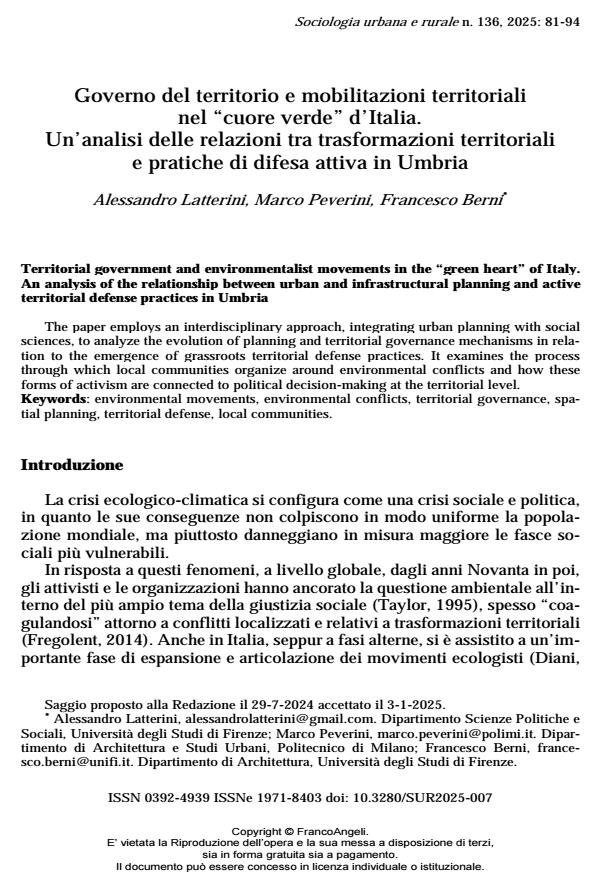Territorial government and environmentalist movements in the “green heart” of Italy. An analysis of the relationship between urban and infrastructural planning and active territorial defense practices in Umbria
Journal title SOCIOLOGIA URBANA E RURALE
Author/s Alessandro Latterini, Marco Peverini, Francesco Berni
Publishing Year 2025 Issue 2025/136
Language Italian Pages 14 P. 81-94 File size 123 KB
DOI 10.3280/SUR2025-136007
DOI is like a bar code for intellectual property: to have more infomation
click here
Below, you can see the article first page
If you want to buy this article in PDF format, you can do it, following the instructions to buy download credits

FrancoAngeli is member of Publishers International Linking Association, Inc (PILA), a not-for-profit association which run the CrossRef service enabling links to and from online scholarly content.
The paper employs an interdisciplinary approach, integrating urban planning with social sciences, to analyze the evolution of planning and territorial governance mechanisms in relation to the emergence of grassroots territorial defense practices. It examines the process through which local communities organize around environmental conflicts and how these forms of activism are connected to political decision-making at the territorial level.
Keywords: environmental movements, environmental conflicts, territorial governance, spatial planning, territorial defense, local communities.
Alessandro Latterini, Marco Peverini, Francesco Berni, Governo del territorio e mobilitazioni territoriali nel “cuore verde” d’Italia. Un’analisi delle relazioni tra trasformazioni territoriali e pratiche di difesa attiva in Umbria in "SOCIOLOGIA URBANA E RURALE" 136/2025, pp 81-94, DOI: 10.3280/SUR2025-136007